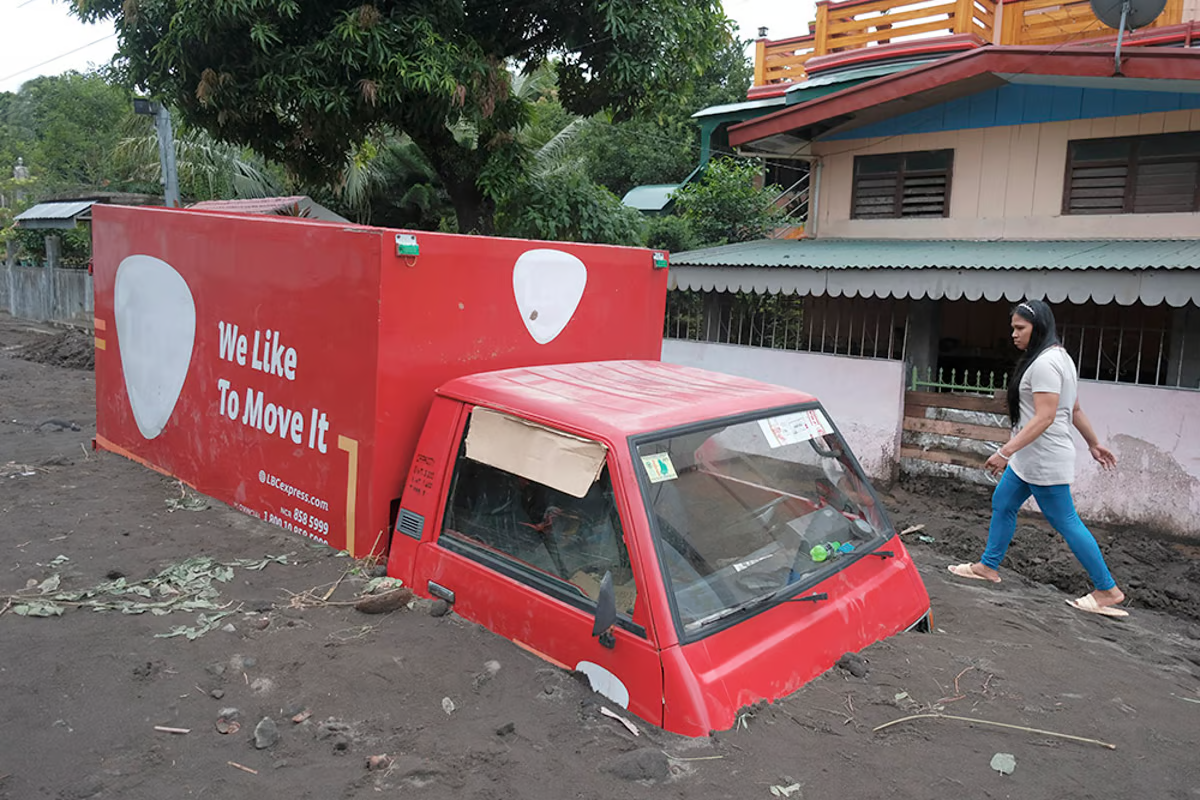Tropical Storm Trami made a devastating impact on the Philippines this week, bringing torrential rains, severe flooding, and deadly mudslides that have claimed over 20 lives and displaced approximately 150,000 people.
Known locally as Kristine, Trami unleashed an unprecedented volume of rainfall on the northern Philippines, primarily affecting the Luzon island and the Bicol peninsula, as rescue operations continue amid challenging conditions.
Record-Breaking Rainfall and Widespread Flooding
Tropical Storm Trami began its onslaught on the northeastern coast of Luzon, the Philippines’ largest and most densely populated island. Trami’s intense rainfall delivered the equivalent of a month’s worth of precipitation in just 24 hours, according to reports from the state weather bureau in Manila.
Read : Only Two Countries in the World Where Divorce is Illegal: The Philippines and Vatican City
This volume of rain is considered extraordinary even for the Philippines, which is accustomed to frequent typhoons during this season. Floodwaters in Bicol forced residents to retreat to the second floors of their homes, while roads and residential areas became submerged, adding to the struggle for emergency response teams.
As the storm traversed the region, the rain continued to pour with unrelenting intensity. The severe weather conditions were not limited to rainfall but were accompanied by strong winds reaching speeds of 95 km/h (59 mph), further complicating the rescue and evacuation efforts.
Read : 3-foot asteroid burns up in Earth’s atmosphere, creates fireball over Philippines sky
In response to the deteriorating conditions, over 150,000 residents were forced to evacuate, while thousands more found themselves stranded as a result of the rising floodwaters and transportation disruptions.
Lahar Mudslides: A Secondary Threat Around Mount Mayon
One of the most hazardous side effects of Trami’s torrential rains was the triggering of lahar, or volcanic mudslides, near Mount Mayon, an active volcano located in Bicol.
These mudslides consisted of volcanic ash and debris from previous eruptions, which were mobilized by the heavy rainfall and cascaded into nearby villages, burying vehicles, homes, and infrastructure. Images captured in the aftermath showed cars and buildings partially submerged in dark grey mud, adding another layer of devastation to the communities already battling floodwaters.

Mount Mayon’s surrounding villages are known to be vulnerable to such mudslides during intense rainfall, but the volume of lahar in this incident exceeded previous occurrences, causing additional displacement and damage. According to Albay province’s acting governor, Glenda Bonga, the severity of the rain and mudslide activity was unforeseen and overwhelming.
As families sought refuge from both floodwaters and mudslides, rescue operations became even more critical, with responders working around the clock to reach isolated and endangered individuals.
Rescue Efforts, Flight Cancellations, and Ongoing Warnings
While the storm has exited the country’s northwestern coast, the impacts are far from over. Rescue teams have been deployed across the affected regions, with some risking their lives to navigate hazardous waters and heavy winds.
In Bulacan province, west of Manila, rescue workers continue to search for a missing fisherman after a boat capsized amid the violent currents. Emergency services have faced multiple obstacles, including limited access to remote areas due to flooding and persistent storm surges.
The storm’s effects also disrupted air travel, with over a dozen flights canceled to and from various parts of the Philippines. In response to ongoing rainfall and the potential for further flooding, landslides, and storm surges, authorities continue to urge residents to exercise caution.
Additional concerns have been raised about a low-pressure area off the coast of Bicol, which forecasters warn could intensify into another tropical depression by the week’s end, potentially compounding the damage already wrought by Trami.
As the Philippines contends with the aftermath of Storm Trami, officials are reflecting on the increased frequency and intensity of typhoons that have marked recent years.
The nation’s exposure to such powerful storms remains a significant challenge, particularly as climate patterns shift and storms continue to bring more severe rainfall and winds to the region.
let’s enjoy few years on earth with peace and happiness….✍🏼🙏

